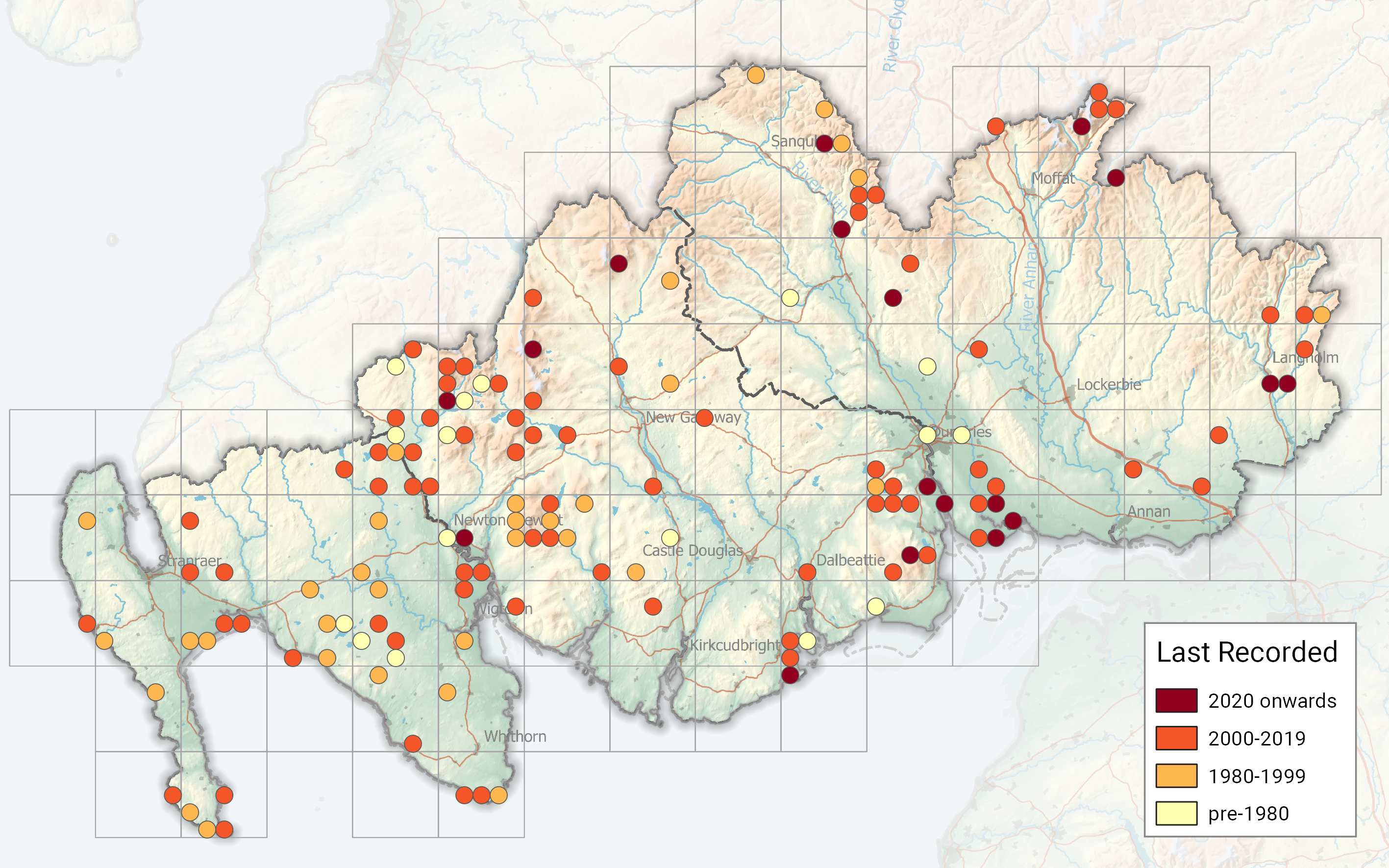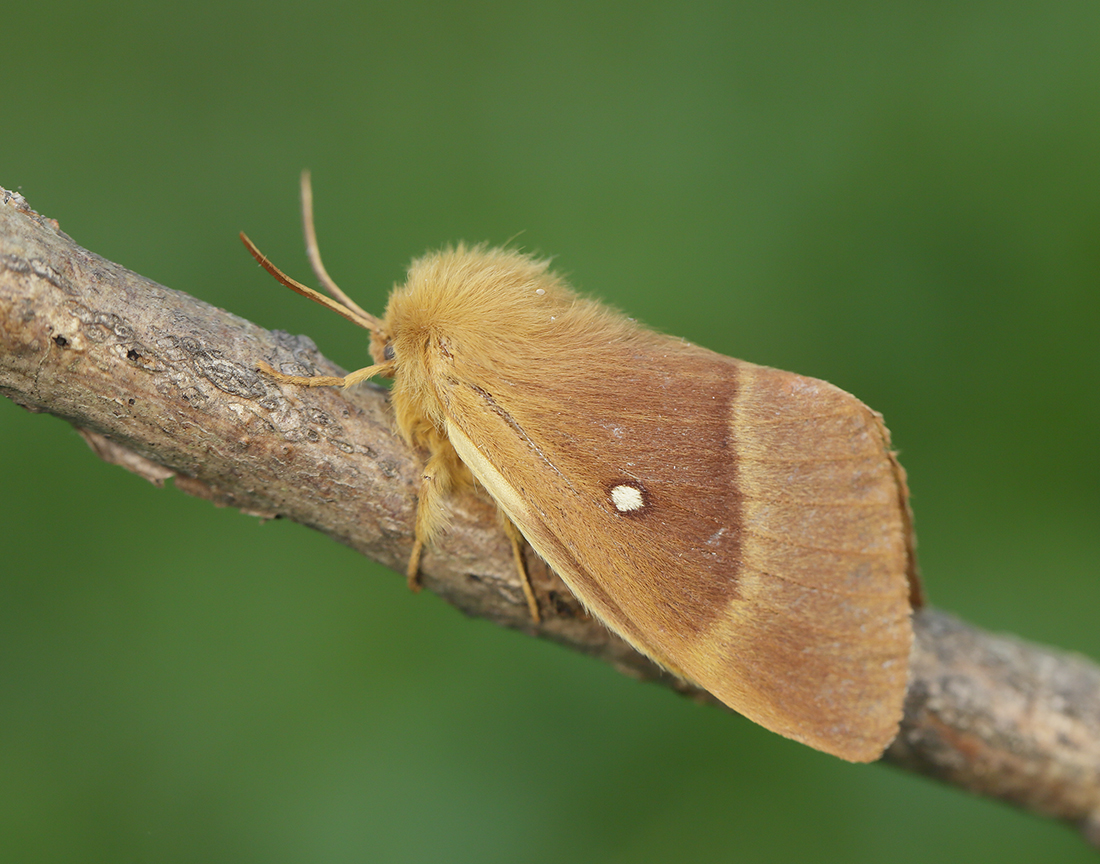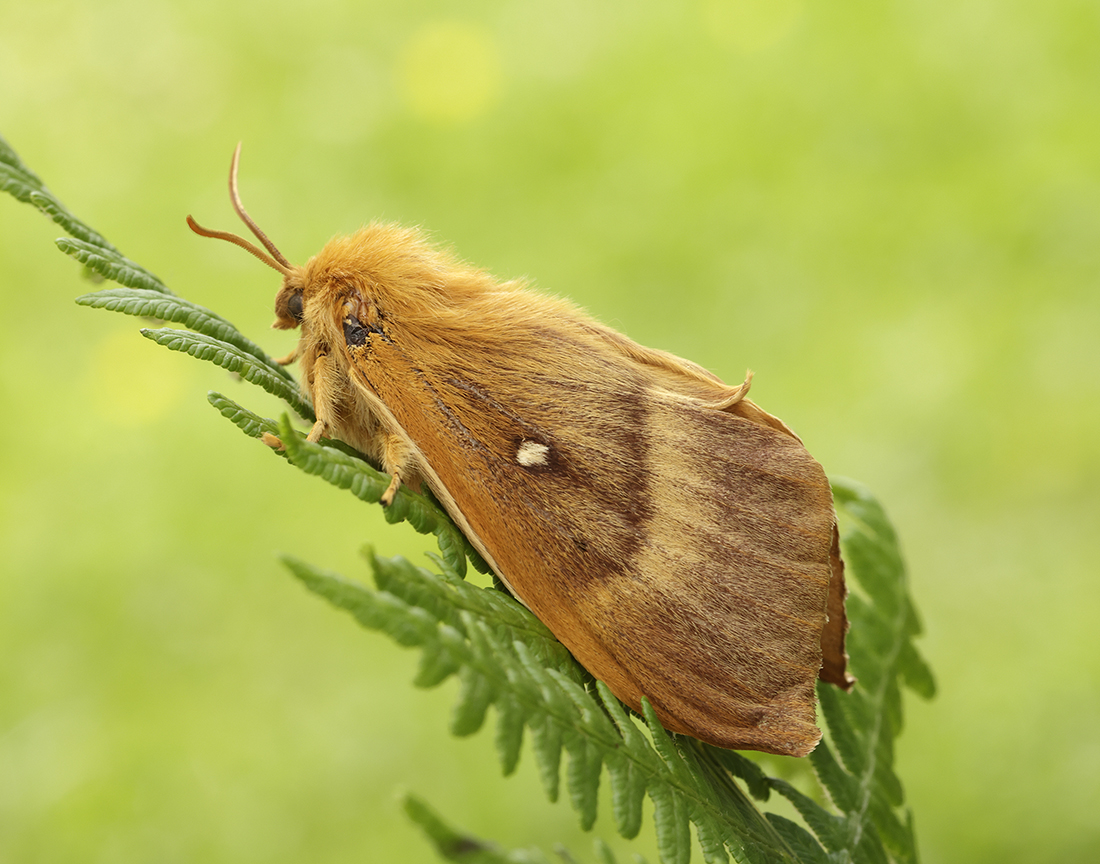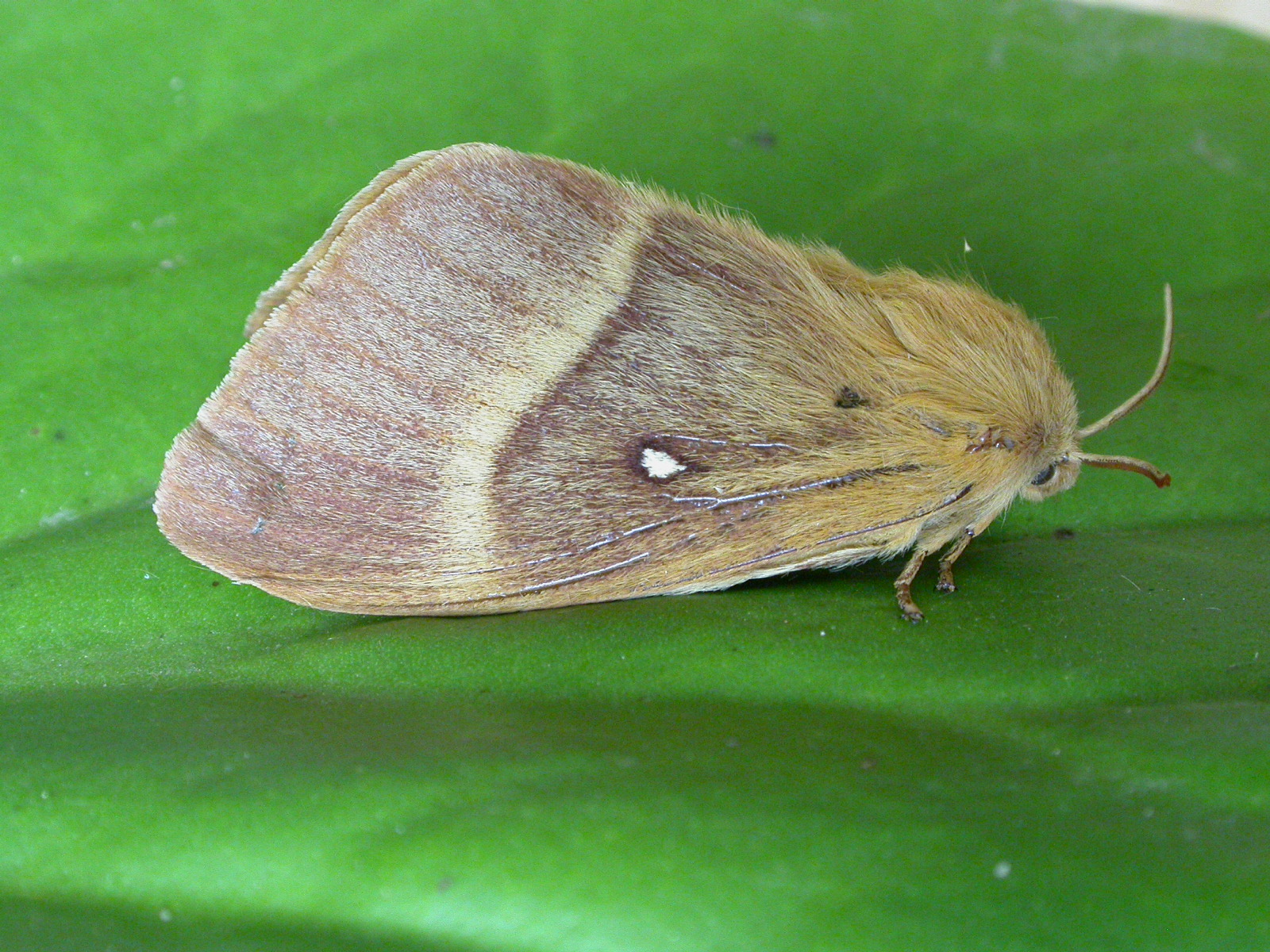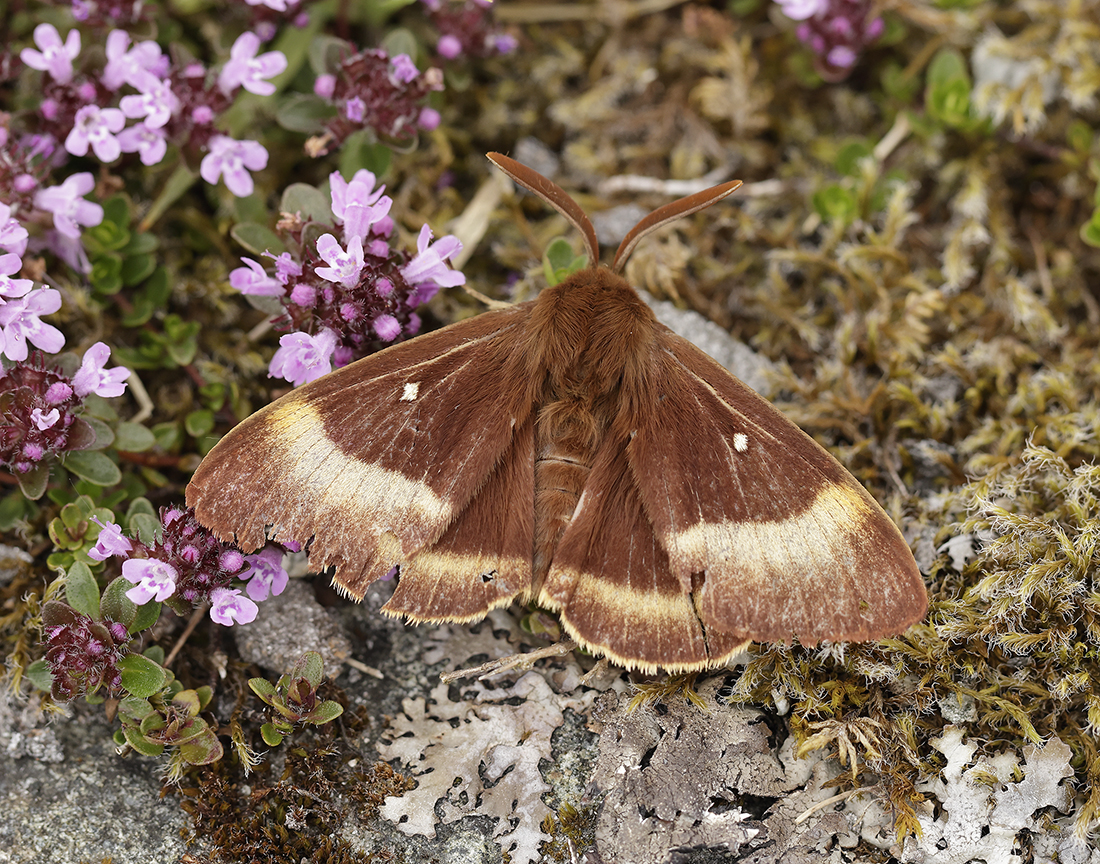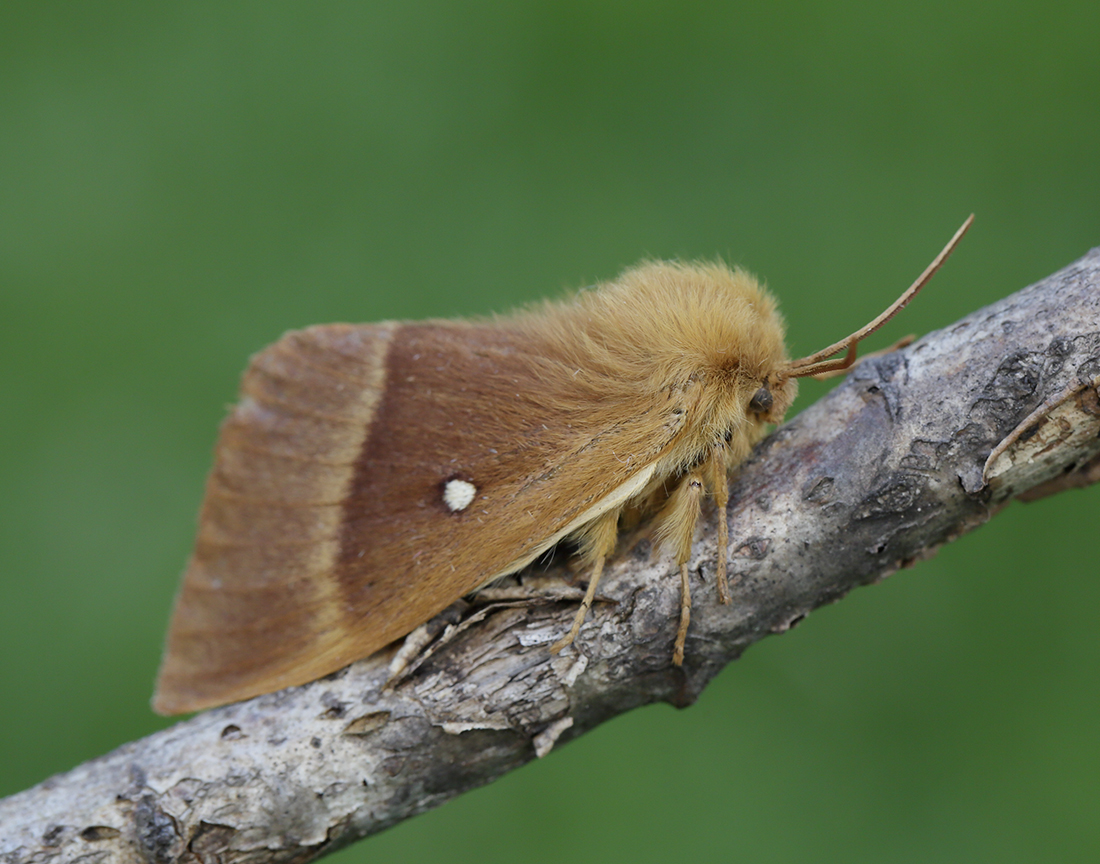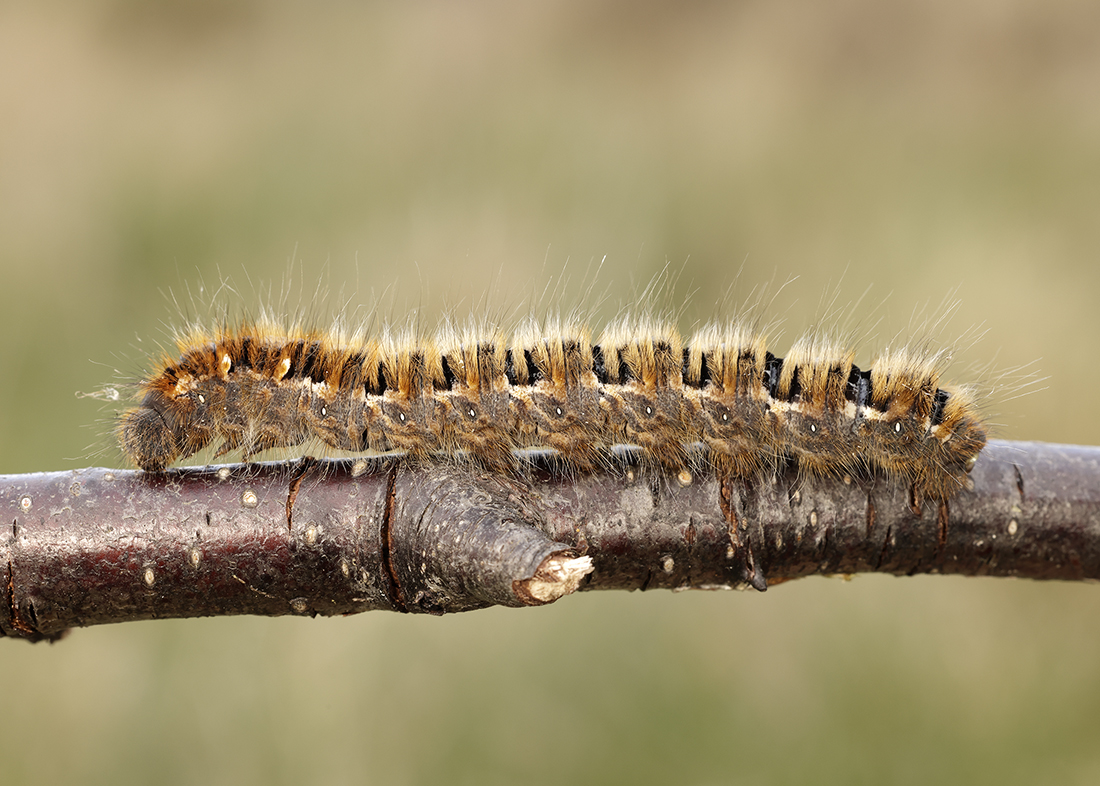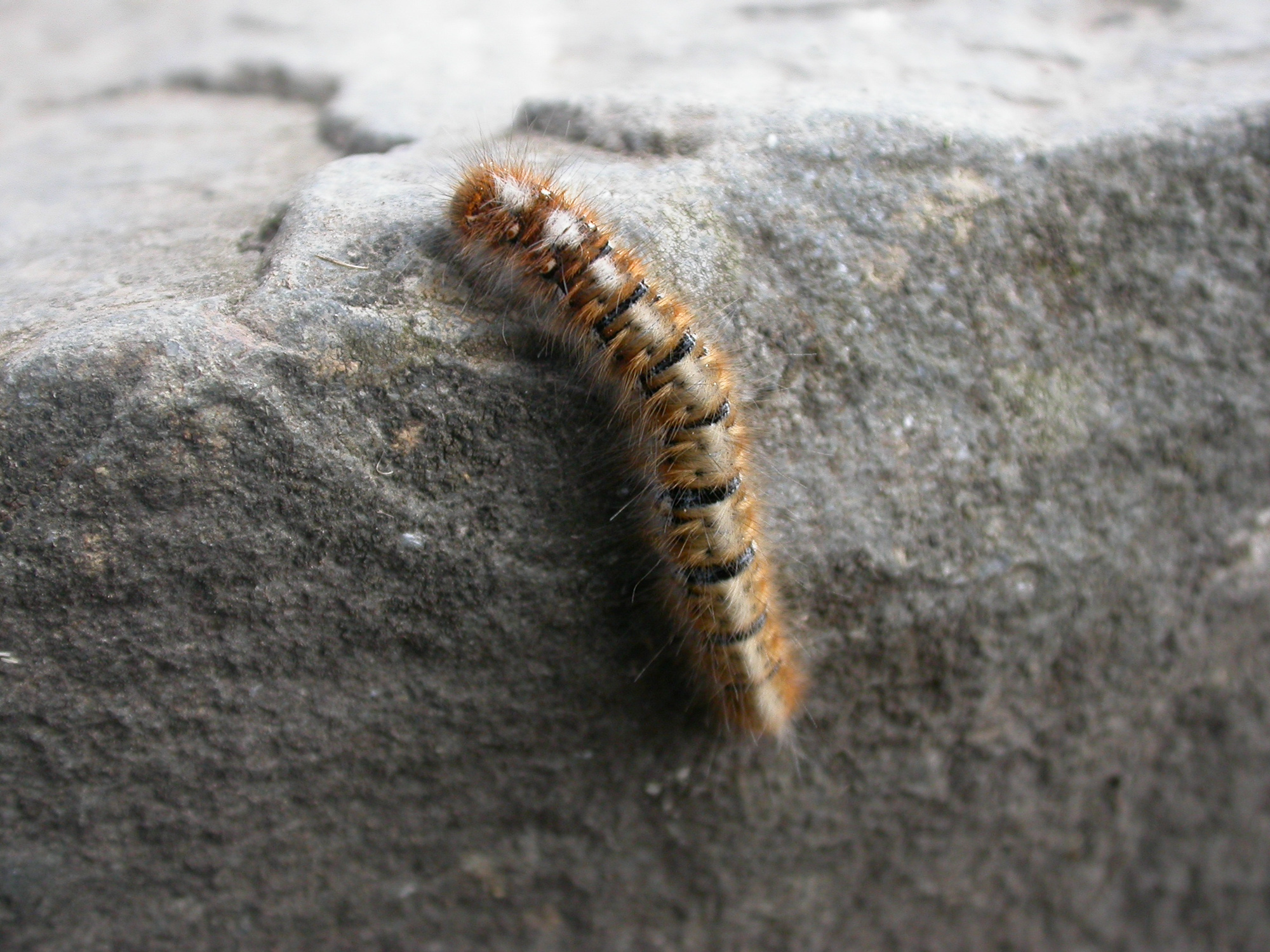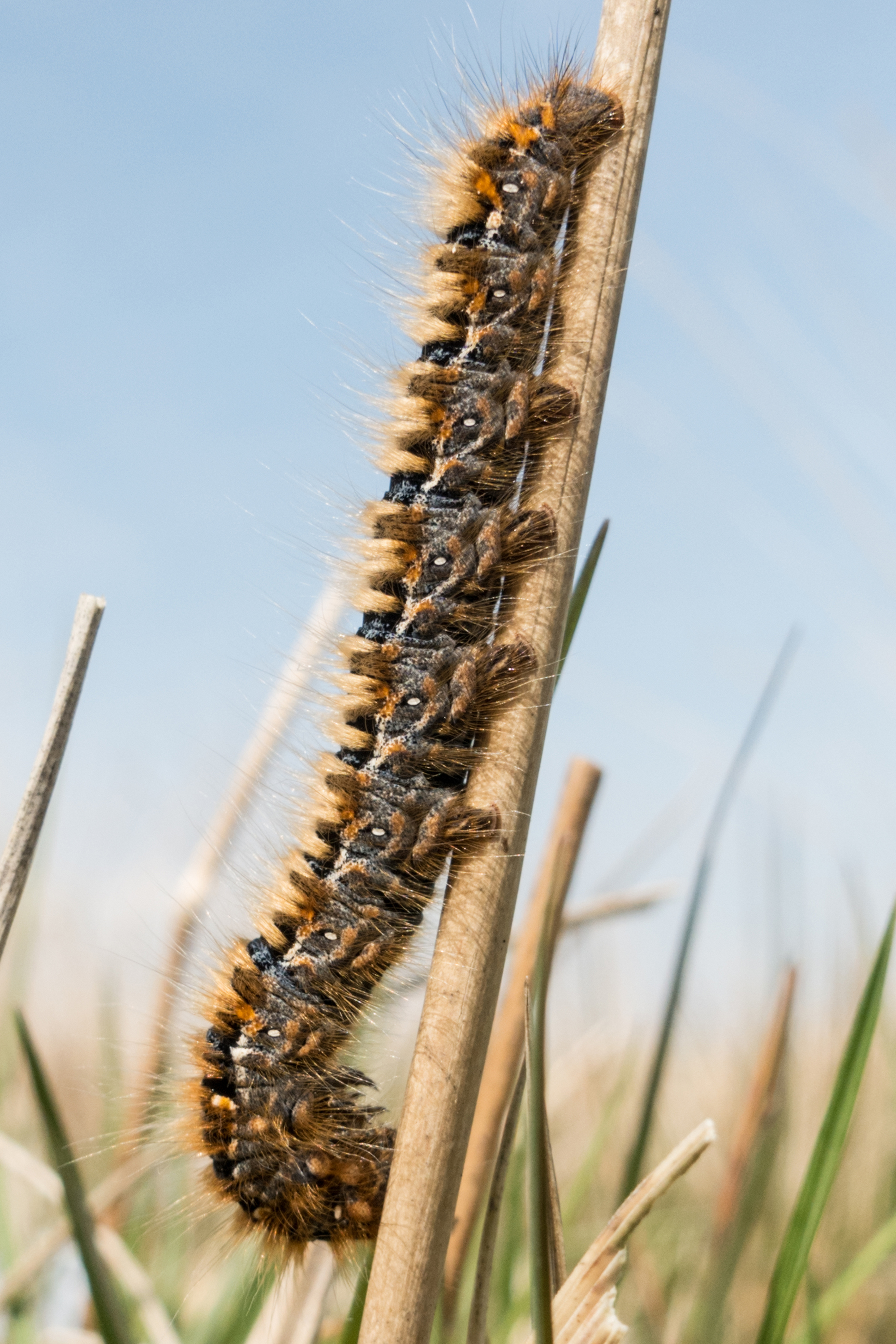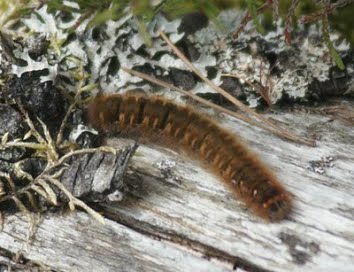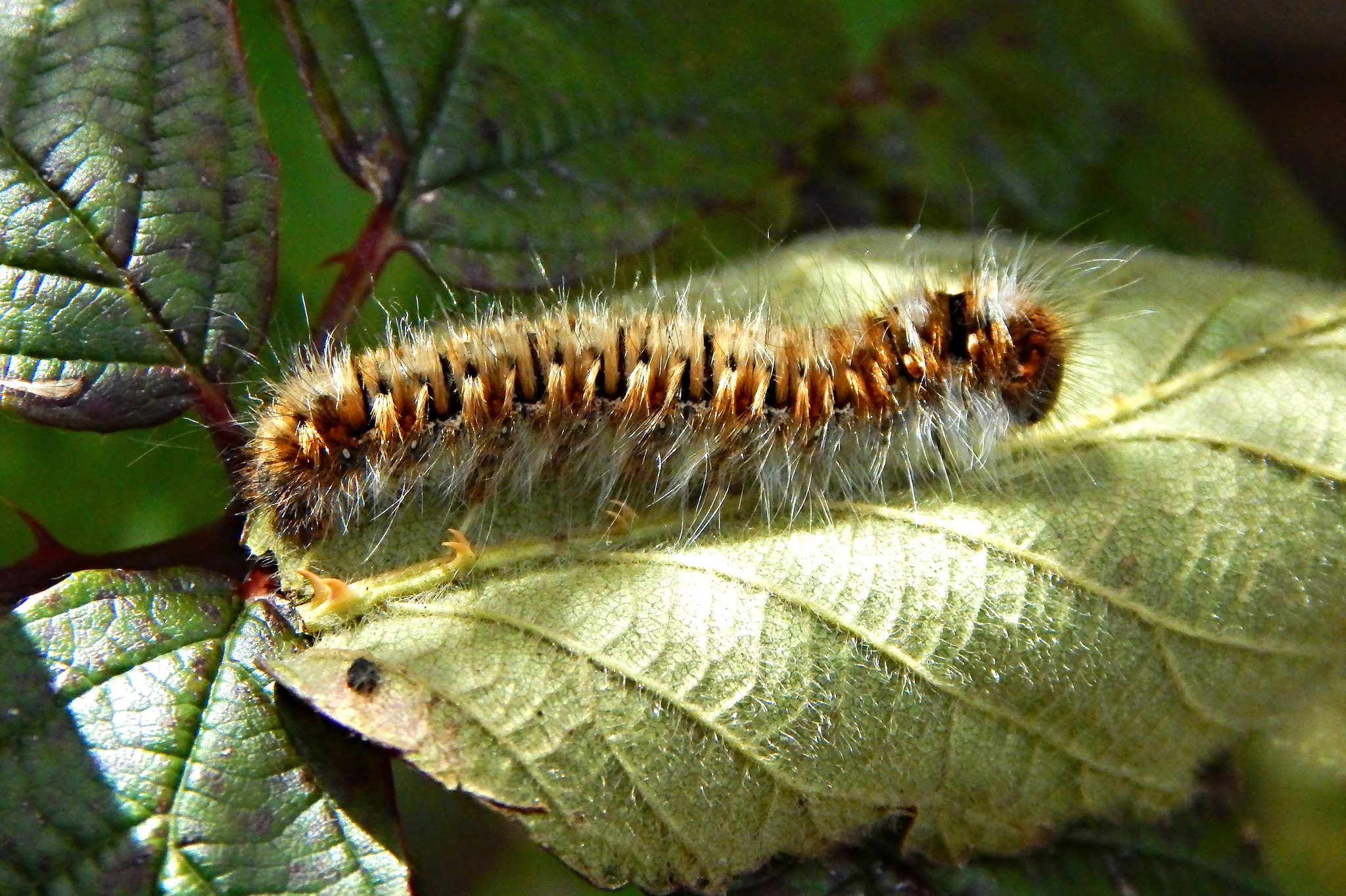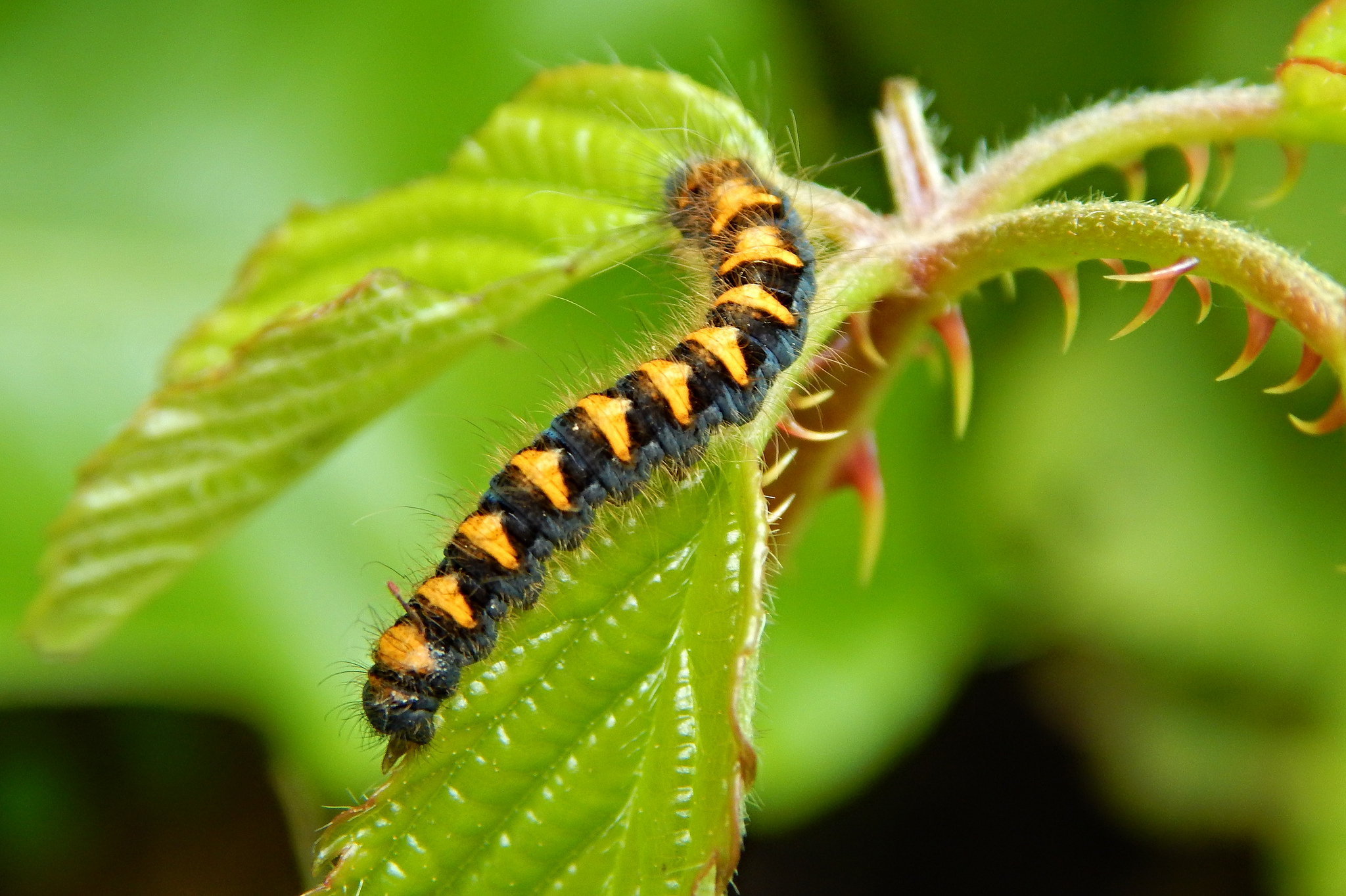Identification
Unmistakable.
Life cycle
One generation. Overwinters as a third instar larva during August to June where it can be seen basking in sunshine. Pupation takes place in a tough brown cocoon close to the ground in leaf litter.
Larval foodplants
Heather and Bilberry, but also Bramble, Blackthorn, Hazel, sallows and other hawthorns.
Habitat
Heathland and moorland, but also woodland edges, fens and sand dunes.
History 1860-2010
Lennon (1860) says: ‘I have just removed from my setting board a fine female of Lasiocampa quercus: I found the larva, feeding on the heather, on the 10th May, [1860]; it spun up on the 14th July, and came out on the 12th August.’ By 1863, Lennon had stated it was generally distributed. W. Douglas Robinson (1870-71) under L. callunae found the larvae during July and August on Almorness (VC73) but added: ‘I have not noticed quercus here as yet.’ Gordon (1913) had found it occurring on all moors and in meadows of Wigtownshire with the larvae common on heather in May. Earliest date was 13th June 1911.
From 1970 to 2010 there were over 170 records from moorland and upland sites across the region, including larvae and pupae records.

